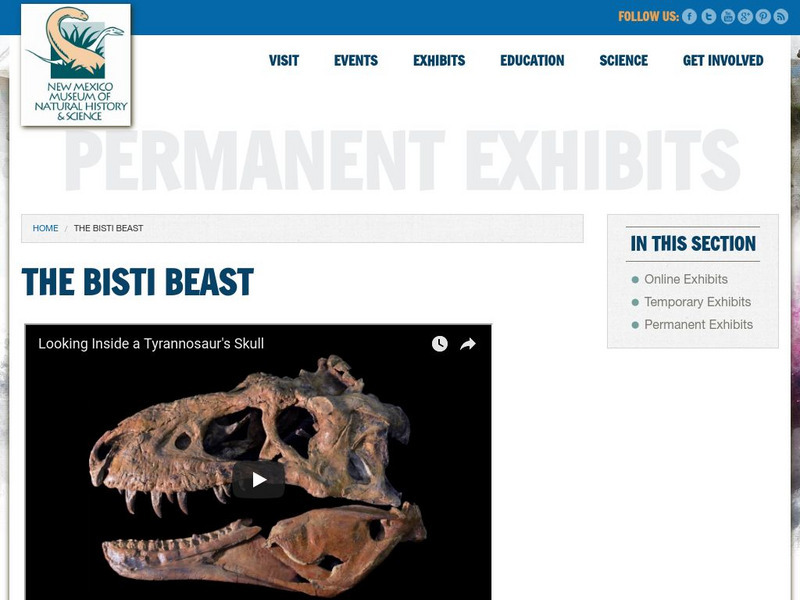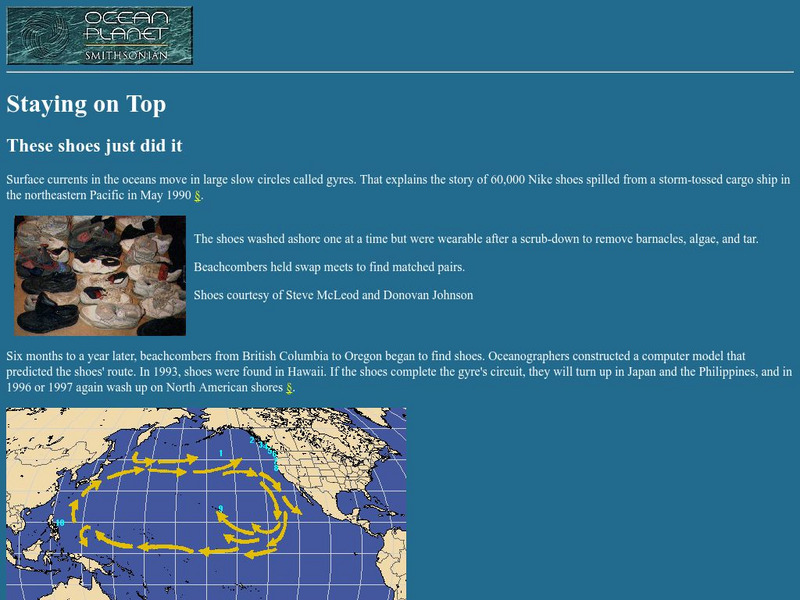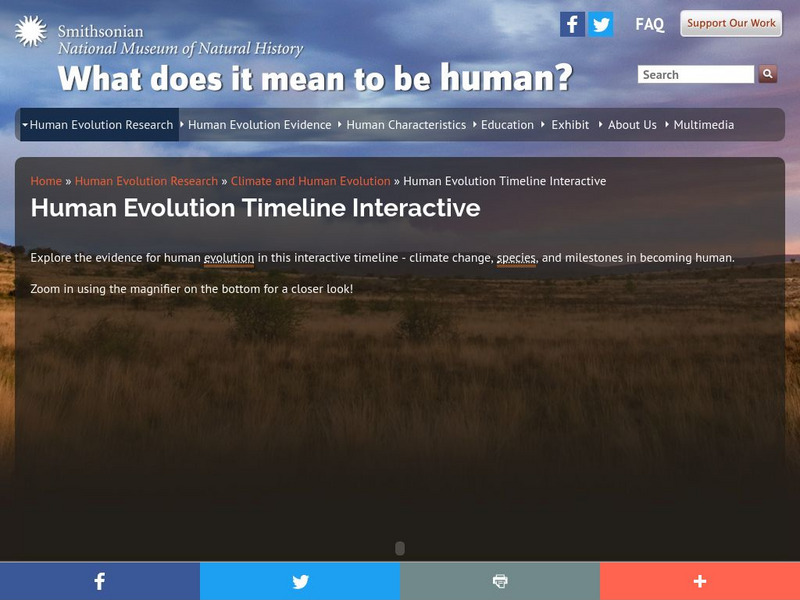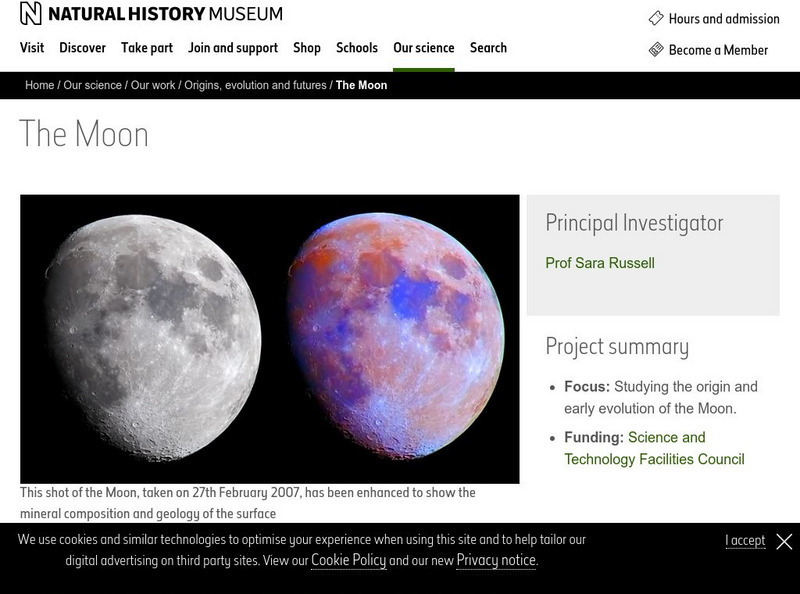Other
New Mexico Museum of Natural History and Science: The Bisti Beast
The Bisti Beast's official name is Bistahieversor sealeyi. It is a tyrannosaur dinosaur, related to the Albertosaurus and the Daspletosaurus, and found in New Mexico. These two pages describe the discovery and reconstruction of this...
Smithsonian Institution
National Museum of Natural History: Ocean Planet: Biological Roulette: Alien Species
Click on the roulette wheel and see how some alien species were introduced into the United States and the effect they have had on our country. This is part of an archived Smithsonian exhibit.
Smithsonian Institution
National Museum of Natural History: Ocean Planet: Oil Pollution
Source provides key facts and figures as well as pictures on various oil accidents. Site information is divided up into three categories: Sources, Accidents and Cleanups. This is part of an archived Smithsonian exhibit.
Smithsonian Institution
National Museum of Natural History: Ocean Planet: Staying on Top
This is the story of the infamous Nike shoes that washed off a cargo ship. The shoes later showed up along beaches, giving oceanographers another clue as to how ocean currents move.
Idaho State University
Idaho Museum of Natural History: Beaver
This competent site delves into the physical characteristics, range, habitat, diet, ecology, reproduction, and conservation status of the American beaver.
American Museum of Natural History
American Museum of Natural History: O Logy: Beautiful Breeds
There are many breeds of horses around the world. Eighteen breeds are featured in this reference resource. Understand how horses are measured, their coat colors, and body types.
American Museum of Natural History
American Museum of Natural History: O Logy: Beautiful Breeds: Lusitano
Facts and images of the Portuguese Lusitano horse breed. Choose Lusitano from the list on the right.
Smithsonian Institution
National Museum of Natural History: Postmodernism and Its Critics
Very thorough overview of Postmodernism theory and this includes Deconstruction. Includes basic premises and the leading figures in the movement.
Smithsonian Institution
National Museum of Natural History: Random Strategies in Archeology
Students participate in a three-part archeological interpretation activity. First, they learn the principles of archaeology and the importance of material culture, and then they question ideas and interpret artifact evidence. Finally,...
Smithsonian Institution
National Museum of Natural History: Homo Habilis
This resource provides graphics, as well as explanation, of the remains of Homo habilis.
American Museum of Natural History
American Museum of Natural History: O Logy: Beautiful Breeds: Hanoverian
Get facts and images of a German breed of horse, the Hanoverian. Choose Hanoverian from the list on the right.
Smithsonian Institution
National Museum of Natural History: Department of Entomology
Search the National Insect Collection, one of the largest entomological collections in the world with over 35 million insect specimens. In addition, learn how insect research is conducted, who is doing the research, read past...
Smithsonian Institution
National Museum of Natural History: Human Evolution Timeline Interactive
Explore the evidence for human evolution in this interactive timeline - climate change, species, and milestones in becoming human. During the period of human evolution, the Earth's climate has fluctuated between warm and cold. Some of...
Smithsonian Institution
National Museum of Natural History: Paleobiology: Green River Fossil Collections
Search the collection of 35,000 fossiliferous rocks found within the Green River Formation of Colorado and Utah. View some of these 50 million year old insect fossils in a linked slide show.
Smithsonian Institution
National Museum of Natural History: Paleobiology: Green River Insects
Interactive photo search of the collection of 35,000 fossiliferous rocks found within the Green River Formation of Colorado and Utah.
California Academy of Sciences
California Academy of Sciences: Natural History Museum
California Academy of Sciences is the oldest scientific institution in the West. This great site describes the museum and shows pictures of various exhibits.
San Diego Natural History Museum
San Diego Natural History Museum: Mineral Matters: Grow Your Own Crystals
Here are step-by-step instructions on how to create crystals. This is a great experiment for students to use in learning about the structure and formation of crystals.
San Diego Natural History Museum
San Diego Natural History Museum: Fossil Field Guide: Lambeosaurus
A look at what fossil evidence reveals about the life and ecological interactions of the lambeosaurus dinosaur.
Natural History Museum
Natural History Museum: Dino Directory
An excellent database of over three hundred dinosaurs from around the world. They are organized by country, continent, time period, and by alphabetical order, and each dinosaur has pictures and facts about it.
Natural History Museum
Natural History Museum: The Moon
A study of the moon that centers on its origin, its structure, and its behavior.
Canadian Museum of History
Canadian Museum of History: Gallery
This article is easy to navigate for students of all ages. Provides examples of Chinese artwork: plants and flowers, birds, mammals, landscapes, portraits, semi-realist landscapes, symbolic art, and abstract art.
University of California
Ucmp: The Museum of Paleontology
This site contains on-line exhibits including animals, plants, time periods, phylogeny, geology, and evolution. Also, a search is provided at the bottom of the site for more specific information.
Other
The Museum of Un Natural Mystery: The Mystery of the Rosetta Stone
A nicely written history of the finding and the decoding of the Rosetta Stone.
San Diego Natural History Museum
San Diego Natural History Museum: Dinosaur Dig
The San Diego Natural History Museum provides dinosaur lovers with plenty of information and fun facts with links to Finding Fossils and Dinosaur Bytes.






















